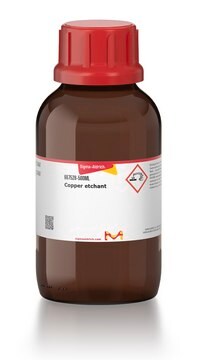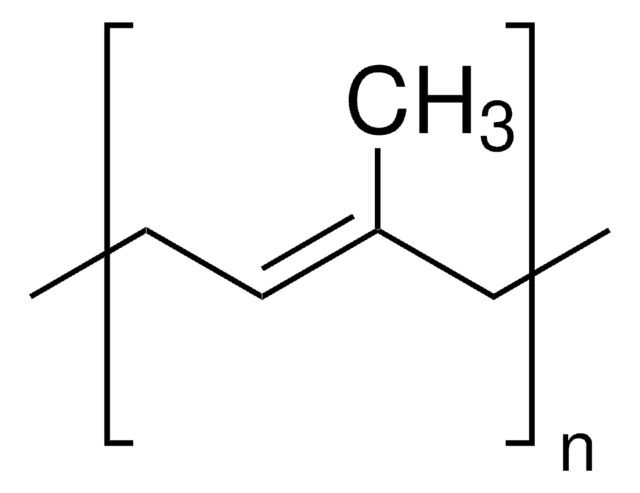Recommended Products
grade
standard
Quality Level
composition
volatiles, 85%
color
clear yellow-orange
bp
100 °C/1 atm
density
1.16 g/mL at 25 °C
Related Categories
General description
Nichrome etchant is a high purity etching system that is a mixture of ceric ammonium nitrate and nitric acid. It can be used to etch the nickel and chromium alloy.
Application
Ceric ammonium nitrate-based etchant. Etches Al, Cr, Cu, Ni, GaAs. Surface oxidizes Si, Ta/TaN. Etch rate of 50 Å/sec @ 40 °C. Etches cleanly with only a deionized water rinse needed.
Nichrome etchant is used in the fabrication of microheater patterns of polydimethyl siloxane (PDMS), silica (SiO2) and glass substrates, which can be further used in the fabrication of flow sensors. It may also be used to etch out nickel (Ni) from the electroplated Ni on amorphous silica wafers.
For use at room temperature or elevated temperature. Etches cleanly, eliminating need for an intermediate rinse.
Features and Benefits
Designed for etching nichrome thin films used in microelectronic applications. Compatible with both positive and negative photoresists and provides fine-line control with minimal undercutting. Filtered to 0.2 micron to remove particlulates and composed of semiconductor grade materials.
Signal Word
Danger
Hazard Statements
Precautionary Statements
Hazard Classifications
Aquatic Chronic 2 - Eye Dam. 1 - Met. Corr. 1 - Ox. Liq. 2 - Skin Corr. 1B - Skin Sens. 1
Supplementary Hazards
Storage Class Code
5.1B - Oxidizing hazardous materials
WGK
WGK 3
Certificates of Analysis (COA)
Search for Certificates of Analysis (COA) by entering the products Lot/Batch Number. Lot and Batch Numbers can be found on a product’s label following the words ‘Lot’ or ‘Batch’.
Already Own This Product?
Find documentation for the products that you have recently purchased in the Document Library.
Simulation and feasibility study of flow sensor on flexible polymer for healthcare application.
Maji D and Das S
IEEE Transactions on Bio-Medical Engineering, 60(12), 3298-3305 (2013)
Perfectly plastic flow in silica glass.
Kermouche G, et al.
Acta Materialia, 114(12), 146-153 (2016)
Protocols
Negative Photoresist Procedure
Our team of scientists has experience in all areas of research including Life Science, Material Science, Chemical Synthesis, Chromatography, Analytical and many others.
Contact Technical Service







